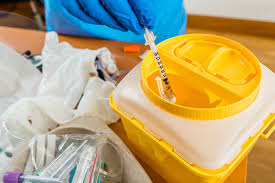
In the domain of contemporary surgery, precision reigns supreme. Surgeons rely on a delicate interplay of skill and technology to navigate intricate procedures with finesse and accuracy. At the forefront of this surgical revolution lies the development of ultra-accurate pressure sensors tailored for laparoscopic and robotic surgical instruments.
These groundbreaking sensors represent a significant leap forward in surgical technology, offering unparalleled sensitivity and feedback mechanisms that redefine the boundaries of surgical precision.
Inspired by the intricacies of nature, researchers and innovators have drawn upon the remarkable sensitivity of biological systems to develop sensors that mimic the subtle responsiveness of living organisms. One such inspiration is the lotus leaf, renowned for its ability to repel water droplets and react to minute pressure changes with astonishing precision.
The result of this ingenuity is a new generation of pressure sensors, aptly named for their ultra-accurate capabilities. These sensors utilize advanced design principles, incorporating layers of air and friction-reducing coatings to enhance sensitivity and responsiveness. Through meticulous engineering and innovation, these sensors have been miniaturized to just a few millimeters in size, allowing seamless integration into laparoscopic and robotic surgical instruments.
The implications of these ultra-accurate pressure sensors are profound, particularly in the realm of minimally invasive surgery. Surgeons performing laparoscopic or robotic procedures face unique challenges, including limited tactile feedback and reduced dexterity compared to traditional open surgery. In such scenarios, the ability to perceive subtle variations in tissue texture and pressure can mean the difference between success and complication.
With the integration of ultra-accurate pressure sensors, surgeons gain unprecedented insights into tissue characteristics and instrument manipulation. The sensors provide real-time haptic feedback, allowing surgeons to discern tissue firmness, texture, and other vital information crucial for informed decision-making during surgery.
Moreover, these sensors hold promise beyond the confines of the operating room. They have the potential to revolutionize intracranial pressure monitoring, offering a non-invasive and highly sensitive method for assessing cerebral dynamics and guiding neurosurgical interventions.
The development of ultra-accurate pressure sensors represents a collaborative effort between researchers, engineers, and medical professionals committed to advancing the frontiers of surgical technology. Through relentless innovation and a dedication to excellence, these sensors pave the way for safer, more precise surgical procedures with improved patient outcomes.
As we stand on the cusp of a new era in surgical innovation, the integration of ultra-accurate pressure sensors heralds a future where precision and compassion converge to redefine the art and science of surgery. With each technological leap, we inch closer to a world where surgical excellence knows no bounds, and patient care reaches new heights of possibility.

























